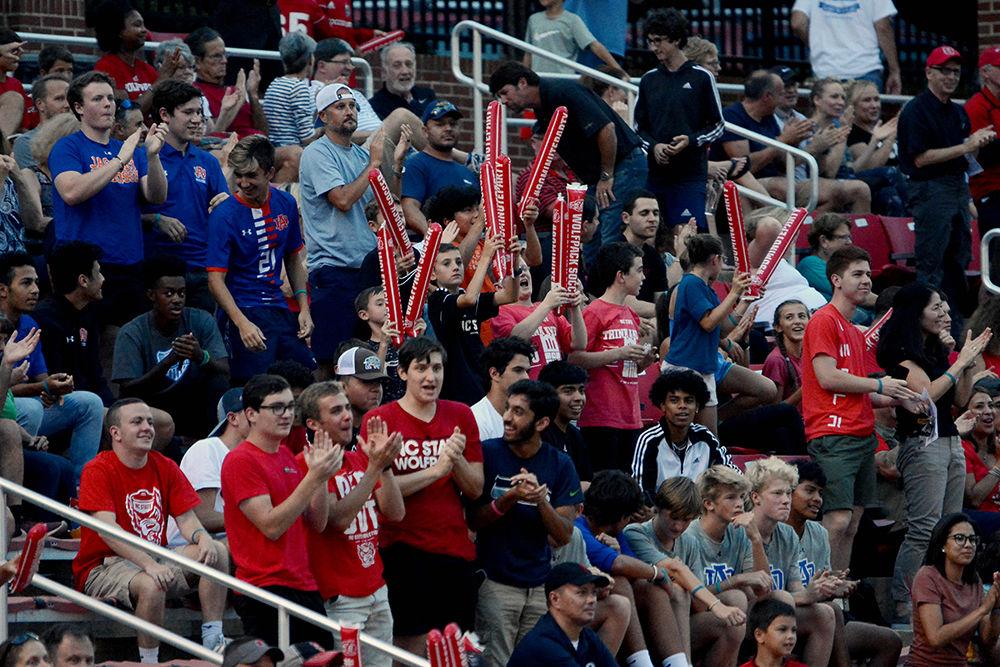Here at Technician Sports, we not only cover every aspect of NC State Athletics, but we also pride ourselves in providing the best sports content we can. Sure, we are writers by trade, but we are also fans of the school we attend. In order to continue to do our jobs, we have a vested interest in seeing college sports come in some shape or form this year.
With so many unknowns surrounding the nature of the COVID-19 pandemic and its potential effects on college campuses, I’ve personally taken the stance of giving up on sports this season and looking ahead to next year. But if the safety of the players were guaranteed, then of course I’d want college sports to return. The only question is, how do schools go about returning to play?
Senior Sports Writer Rachel Bilenki wrote an article last week, similarly detailing her enthusiasm for college sports, but not at the expense of the health of students and players. At the end, she details how following standard guidelines, such as wearing masks and social distancing, will eventually make NC State safe enough to “be back in Carter-Finley”—you can insert PNC Arena, Reynolds Coliseum, Dail Field and other venues, depending on your sport of preference. But while there is no doubt that this will eventually happen after the COVID-19 crisis is all said and done, I’m afraid the quickest path to having college sports doesn’t include college campuses in its plans. After each passing day, it seems less likely that the Wolfpack will sell out Carter-Finley, PNC or any other place.
The past few months have seen several professional sports leagues try to return to play by having players play in bubbles, areas sectioned off from their immediate environments that allow players to remain free from other COVID-19-susceptible areas. Once players enter, they are tested for COVID-19, and once they are cleared, are advised not to leave their bubble. If players do leave the bubble, they are placed in quarantine upon return, tested again and then allowed to play after being cleared. Players with positive tests remain separated from their teams and other personnel until they get treatment.
The NHL, NBA, WNBA, MLS and NWSL have instituted differing versions of the bubble, to a high degree of success. Most leagues focused on creating a single bubble where all teams can play, while the NHL opted for two bubbles, one for each conference, and they too have had success in containing the virus. The only other sports league to not use a bubble system is the MLB, opting to play in their stadiums per usual, and thus far, the MLB hasn’t been able to keep positive cases at zero like their counterparts.
There are obvious lessons that the NCAA can learn from the professional leagues. The circumstances surrounding COVID-19 created a science experiment that allowed the NCAA to compare the bubble environments with the non-bubble MLB, and in the sample size given so far, it seems like having a bubble environment actually works, while having teams travel from stadium to stadium still leaves players vulnerable to contracting coronavirus. On the off chance sports return this year, colleges have to do so in a bubble environment, if protecting their student-athletes is a priority. Under normal circumstances, this would be impossible. After all, student-athletes need to go to class. But after recent events transpired, the impossibility of making the logistics of a college bubble work all of a sudden became less impossible.
NC State joined UNC and others in scrapping their attempts at classroom learning and finally decided to move all-online instruction. The list of schools that tried to have in-person classes but finally opted for online instruction is growing. This provides the opportunity, should college conferences decide it to be in their best interest, to transplant student-athletes into a bubble environment while still being able to stay in class.
There is no perfect solution to having college sports again, and perhaps schools should prioritize creating a safe environment for their students before having to worry about how to play sports again. But for the student-athletes that attend NC State and other colleges around the country, this is a problem that has a very easy solution: return to play at all costs.
In a previous commentary, I mentioned that many student-athletes desperately want to return to the field, showing their love for sports through the Twitter hashtag #WeWantToPlay. That article takes a less positive view of having student-athletes try to play, but it highlights something that has been lost in the argument to continue play in the last several months: Sure, fans of sports haven’t watched their favorite teams play and can put aside their feelings so that players can stay safe, but for student-athletes that haven’t played in months, efforts to keep them safe are depriving them of what they love to do. While we shouldn’t force anyone to play if they don’t want to, we also shouldn’t force people itching to play to stay idle. As the NCAA finds solutions to keep student-athletes safe, it’s worth remembering that keeping student-athletes safe and allowing players to play aren’t mutually exclusive. For the sake of the players who want to play, we need to pursue those kinds of solutions. In other words, let them have their cake, and eat it too.








